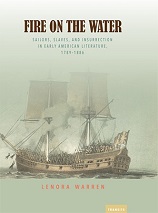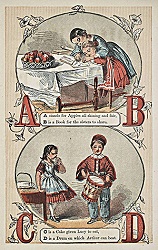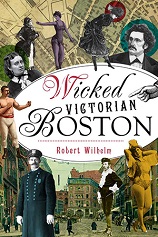Ribald Renderings, a Nuanced Novella and Informed Innocence: Readex Report (November 2019)
In this issue: Seamy urban newspapers seduce and scandalize readers in 19th-century America, weighty themes abound in yesteryear’s children’s books, and did an 1849 execution inspire an enigmatic American novella?
By Lenora Warren, Lecturer, Department of English, Ithaca College
 What connects the 1849 execution of an obscure African American sailor with Billy Budd, Sailor, the enigmatic novella written by Herman Melville, one of the greatest American writers of the nineteenth century? Perhaps a great deal. Let’s begin with the sailor, a man by the name of Washington Goode, about whom little is known. As a very young man Goode served under Andrew Jackson during the Seminole War, and after the war, he served as a ship’s cook. By 1848 Goode was a resident of “The Black Sea,” a neighborhood frequented by sailors on leave, immigrants, and African Americans, and notorious as a hotbed … > Full Story
What connects the 1849 execution of an obscure African American sailor with Billy Budd, Sailor, the enigmatic novella written by Herman Melville, one of the greatest American writers of the nineteenth century? Perhaps a great deal. Let’s begin with the sailor, a man by the name of Washington Goode, about whom little is known. As a very young man Goode served under Andrew Jackson during the Seminole War, and after the war, he served as a ship’s cook. By 1848 Goode was a resident of “The Black Sea,” a neighborhood frequented by sailors on leave, immigrants, and African Americans, and notorious as a hotbed … > Full Story
The Cultural Work of Child’s Play: Examples from Three Picture Books in Readex Digital Collections
By Laura Wasowicz, Children’s Literature Curator, American Antiquarian Society
 Recently digitized children’s books available in Readex collections include three that show the interplay between adult work and child’s play—opening up newly accessible vistas in areas such as visual culture and child studies. In my tenure of over thirty years at the American Antiquarian Society, I have either cataloged or supervised the cataloging of the books in the AAS Children’s Literature Collection. This position has given me great control over the production of high-quality, detailed catalog records that provide rich metadata for author (many of them were women who did not sign their actual names to the books that they wrote), publisher (including many from towns outside of the major … > Full Story
Recently digitized children’s books available in Readex collections include three that show the interplay between adult work and child’s play—opening up newly accessible vistas in areas such as visual culture and child studies. In my tenure of over thirty years at the American Antiquarian Society, I have either cataloged or supervised the cataloging of the books in the AAS Children’s Literature Collection. This position has given me great control over the production of high-quality, detailed catalog records that provide rich metadata for author (many of them were women who did not sign their actual names to the books that they wrote), publisher (including many from towns outside of the major … > Full Story
By Robert Wilhelm, author of Wicked Victorian Boston
 The early 1840s saw the rise of new underground newspapers, known collectively as the “flash press,” dedicated to the licentious appetites of the American urban male. Their readers saw these publications as satirical, irreverent and ribald; but to their opponents, they were obscene, vulgar and immoral. At first glance, they looked no different from the dozens of daily and weekly newspapers available in New York and Boston at the time, but the illustrations on the front page of nearly every copy were a tipoff that their content would not be ordinary. The pictures were often double entendre—sometimes less than double—and even when not blatantly sexual, they were always lively and eye ... > Full Story
The early 1840s saw the rise of new underground newspapers, known collectively as the “flash press,” dedicated to the licentious appetites of the American urban male. Their readers saw these publications as satirical, irreverent and ribald; but to their opponents, they were obscene, vulgar and immoral. At first glance, they looked no different from the dozens of daily and weekly newspapers available in New York and Boston at the time, but the illustrations on the front page of nearly every copy were a tipoff that their content would not be ordinary. The pictures were often double entendre—sometimes less than double—and even when not blatantly sexual, they were always lively and eye ... > Full Story
Subscribe today to receive the next issue of the Readex Report in your inbox. Browse previous issues in our archive. If you would like to suggest or contribute an original article, please email the Readex Report editor.



